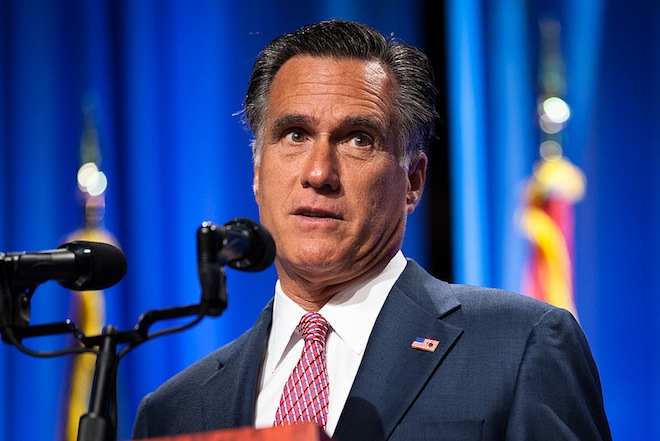The Obama campaign has made Mitt Romney’s plan to turn Medicare into a subsidized private insurance system central to its reelection pitch. House and Senate Democrats are likewise raising the unpopular plan as an issue in their own campaigns. And indeed, the two parties have very different views about how the Medicare program should be structured.
But as Bill Clinton memorably reminded voters at the Democratic convention, Romney has an even farther-reaching plan for Medicaid — the jointly-operated state-federal health insurance program for the poor, which also provides nursing home care to hundreds of thousands of seniors and long-term care to millions of disabled people.
Romney wants to hand that program entirely over to states then cap its budget to effectively and severely cut its funding.
“Block granting” isn’t privatizing. And Medicare has more political valence because of its status as a retirement security program for seniors. But as far as financing the programs goes, President Obama and Mitt Romney differ much more dramatically over Medicaid than they do over Medicare.
Using CBO data, and specifics contained in the most recent House GOP budget, authored by Romney’s running mate Paul Ryan, health care experts Aaron Carroll and Austin Frakt were able to extrapolate spending on Medicare and Medicaid under both Romney and Obama regimes out to the year 2035.
Frakt provided me the data and methodology he used for this article in the Journal of the American Medical Association, which allowed us to recreate the below graph.
If Obama’s re-elected, and implementation of the Affordable Care Act Continues apace, the Medicaid program will be expanded dramatically — from 100 to 133 percent of the federal poverty level — and spending on the program will increase. Romney promises to repeal the ACA, and then block grant Medicaid — that is, eliminate requirements states must meet to be eligible for federal matching funds, and simply hand them money to provide health care services to the needy as they see fit.
At the same time, Romney proposes limiting Medicaid spending growth to the rate of inflation plus one percent — much slower than the typical rate of health care cost growth. Combine that with an aging and growing population and experts estimate that Romney is in effect proposing to cut Medicaid funding over 10 years by about $800 billion — not counting the funds states would lose as a result of rolling back the ACA’s Medicaid expansion.
By contrast, Romney proposes spending more money in the medium term on Medicare than Obama does. This is largely driven by the fact that Romney proposes repealing the tens of billions of dollars in annual savings Obama wrung from Medicare in the Affordable Care Act.
Taken together, a system like the one Obama proposes would nearly double Medicaid spending as a percentage of GDP over the next two decades. Romney’s would nearly halve it.
Additionally, as Frakt points out, his calculations are based on the House GOP budget, which proposed capping Medicare spending growth. Romney’s new plan is silent about the cap.
“Technically this might understate the additional spending under Romney,” Frakt said. “More recently Romney’s said there won’t be a cap. If there is no cap, the spending might be even higher.”
This gives the lie to partisan claims that Romney would save Medicare from insolvency — his plan would hasten the exhaustion of Medicare’s part A trust fund by eight years, potentially triggering deep, automatic cuts to the program in 2016.











